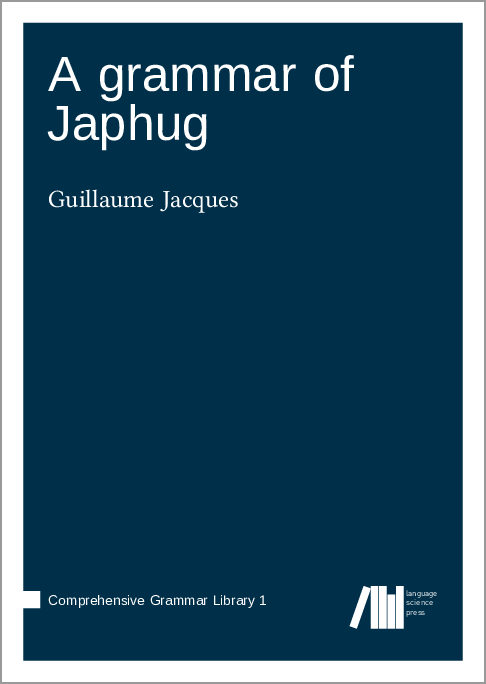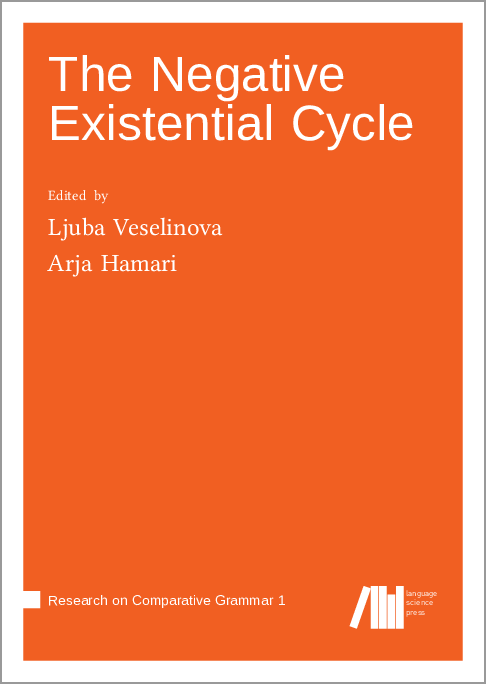Martin, you started the project of a scholar-owned press in 2013, together with Stefan Müller. How did you get involved in Language Science Press, and what can you tell us about the developments and your experience?

One day in 2012, I received a message from Stefan Müller (then at FU Berlin), who asked me if I wanted to get involved in a project for bottom-up open-access publication in linguistics. We had not met before, as we belong to somewhat different communities (I’m a typologist, and Stefan mostly works on the formal syntax of German), but after our first meeting, we felt that there was enough common ground to start a project. It took over a year to set everything up: In 2013, we received start-up funding from the DFG, and our first book came out in 2014. That was an exciting time, and we were happy to be supported by a lot of colleagues right from the beginning. Stefan has amazing technical and design abilities, and he was persuaded by key aspects of my strategic vision. We had hoped that our publishing imprint would be a big success, but in hindsight, the success was bigger than we could have realistically expected. To a large extent, this was of course because we found exactly the right person to manage our day-to-day operations 🙂 On the other hand, it was a bit of a disappointment that our model was not copied more often by others. Open-access publication is becoming more and more common, but most of it is top-down, with the big commercial publishers controlling most aspects. So Language Science Press is still a very special enterprise.
As of today, your series Studies in Diversity Linguistics has 32 published books and 105 expressions of interest. How do you cope with that interest and demand?
That’s indeed a good question – and sometimes I don’t (some authors will know what I mean, because I don’t always reply super fast). Due to my position at a prestigious Max Planck Institute, my name is very well known, so this generates trust and interest in the series that I started, I think. Ideally, the work would be distributed over more shoulders. On the other hand, I have more time than most of my colleagues as my position does not involve teaching, so I feel a particular obligation to invest my time in service to the community. For the task of reviewing submitted books, I have developed a somewhat novel approach, which has helped especially for voluminous grammars: Instead of asking a single colleague to review a 600-page work, I ask 24 colleagues to review a 50-page chapter (so that in the end, every chapter is read by two colleagues). This means a lot of correspondence, but as I do it in the traditional way (not via an automated system), this is also quite nice at a personal level.

You told me that you felt that this series had become too big, and that you want to start two new series instead. But two series sounds like even more work than one.

My first series (Studies in Diversity Linguistics) was conceived of as very broad, encompassing almost everything that interests me. This was good at the beginning, as I did not have to reject books on, for example, The languages of Malta, or a text collection of Amazonian languages. As the series grew, I decided that I could not accept everything anymore that falls under this broad label of “diversity linguistics”, and I focused on reference grammars and typological works. Now there will be two separate series for these two topics: Comprehensive Grammar Library (CoGL) and Research on Comparative Grammar (RCG).
Can you say a bit more about the scope of the two new series?

The Comprehensive Grammar Library basically continues the tradition of publishing high-quality grammars in a specialized book series. The series title pays homage to the “Mouton Grammar Library”, started in the mid 1980s by Georg Bossong and Wallace Chafe, and which was the first series to publish grammars of languages from around the world. My Grammar of Lezgian came out in this magnificent series (in 1993, with gold letters on the cover), and it helped me establish my scholarly reputation – but it was not reader-friendly, because of its high price (DM 299, i.e. about €150). Ever since this experience, I thought about alternatives to “high-price glamour”, and Language Science Press has provided an excellent solution: We provide scholarly selection (not based on commercial viability), serious reviewing, high-quality technology and design, but the books are free to download. I’m glad that the stream of excellent grammars that have been produced is continuing, and that we have more and more input for worldwide cross-linguistic studies. The first volume of this series, Guillaume Jacques’ A grammar of Japhug is a milestone in this regard, at 1600 pages.

Cross-linguistic research in the Greenbergian tradition is really my main interest, and this is the topic of the other new series (Research on Comparative Grammar). The first series (Studies in Diversity Linguistics) published grammars, comparative work, and also volumes on specific families (e.g. Siouan), or other special topics, but I want to narrow the scope to truly global work. There is a lot of work on language contact in particular areas, but this does not contribute directly to our understanding of Human Language, so I want to focus on work with global scope. But there is no requirement for representative sampling. In fact, a lot of comparative work these days takes the form of comparativists leading an edited volume that consists of language-particular contributions. The forthcoming volume on the Negative Existential Cycle (edited by Veselinova and Hamari) is a good example of this. Such works may include only 10 or 15 languages, but especially when the topic is relatively new (as in the book on “bridging constructions” edited by Valérie Guérin), such works make an important contribution to general linguistics.
In the past, such works were typically treated under the heading “typology”, but I now prefer “comparative grammar”, because this label is less idiosyncratic and fully transparent: comparative grammar is analogous to comparative law, comparative anatomy, comparative mythology, and so on.
Language Science Press is flourishing. What is the main reason for that, in your view, and what advice would you give other people who want to set up a scholar-owned press?
I suspect that the success of Language Science Press is due to two factors: On the one hand, we were lucky that three people came together in 2013 who shared a similar vision of what we wanted to achieve. But on the other, linguistics is the right field for it, because linguists are technologically more advanced than the humanities, but they like to publish books (monographs and edited volumes). In the natural sciences and in psychology, publication happens through journals (or preprint archives), and in the technological fields, proceedings volumes play a big role. Linguistics is more like the humanities in this respect – but our books tend to be highly technical, so it is not attractive for publishers to market them to a broader audience. This also means that linguistics book authors do not expect royalties, which makes them very different from, say, authors of history books or art books. I’m not quite sure that this is right, because I don’t follow the publication scene closely anymore, and there is probably serious research on such questions. But I have found it striking how deeply entrenched the cultural differences between disciplines are. Even though the incentive systems in more and more countries try to treat all disciplines like the natural sciences (encouraging journal publication), linguists continue with the publication categories that we knew in the 1980s. Even festschrifts are alive and well – something that I would not have expected. Cultural categories sometimes seem to be more persistent than the underlying technology.
What follows from this for others that might want to set up a scholar-owned press? As the technology matures and the tools become easier, I would assume that other fields with similar publication styles can adopt our model – if they can get the funding. Since it’s more and more normal to expect books to be available in open access, the model of a smallish book imprint should be increasingly attractive for all kinds of highly specialized books. And universities should find it attractive to set up their publication labels. If there were a “Leipzig University Press” funded by Leipzig University, dedicated to publishing specialized humanities books (and run by the university library), that would seem to create a lot more value for money than journal licenses that are restricted to a single institution. After all, access can be easily provided in a global way (via open access or country-level licenses), but specialized publication comes with the sort of prestige that universities crave and have the ability to create.

“Now there will be two separate series for these two topics: Comprehensive Grammar Library (CoGL) and Research on Comparative Grammar (RCG).”
…
“I would assume that other fields with similar publication styles can adopt our model – if they can get the funding.”
Question: Do you get funding for both series? If so, how is it calculated?